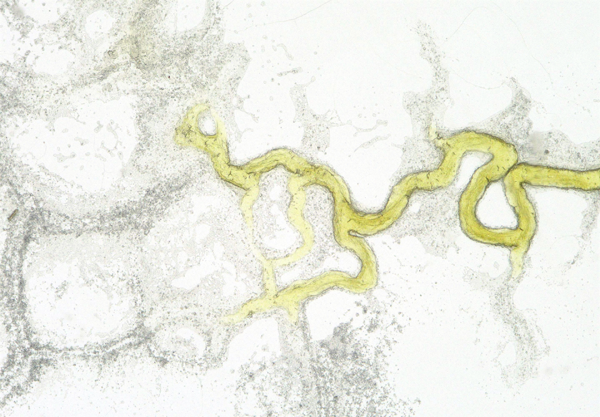Images of climate innovation
Architecture after Architecture
This image, by Shem Johnson at the CSM Grow Lab, shows a slime mould: an aggregate of single-cell organisms that come together to reproduce and grow as one body. At the same time, we imagine it as a landscape: a coming together of small actions that scale up, and produce new futures. With it we propose a systematic rethinking of spatial practices in the face of the climate emergency.

What happens to architecture after the climate emergency undoes its foundational assumptions of growth, extraction, and progress? The Architecture after Architecture research project proposes a systematic rethinking of spatial practice and its impacts across economic, behavioural, and social structures. This requires going beyond technical fixes, adaptations, and resilience strategies by addressing the cultural and socioeconomic factors that influence how we make, occupy, and share space.
Architecture after Architecture engages in speculative and imaginative forms of thinking to develop critical distance from anthropocentric and extractivist forms of knowledge, including those based on ideals of progress and economic growth. The project develops scenarios for future practice that respond to the climate emergency, in fields of architecture, planning, geography, and policy. It uses innovative research methods including scenario-building workshops with multi-disciplinary groups. Alongside this, the research project compiles an open-access international database of practitioners responding to challenges posed by the climate emergency. We think through and map material systems as relational diagrams, in ways that are rarely described within spatial practice, and use these to identify where spatial practices can intervene productively in creating better futures.
Arguing for more systemic and more networked approaches to the ever-intensifying climate emergency, the aim of the project is to imagine and communicate futures thought of in wider earth-system terms which includes animals, plants, critters, buildings and other beings. Partnerships with economists, local authorities, professional groups, and civil society organisations are being developed through the project in order to develop implications and applications of these scenarios in the form of design codes, standards for practice, and local charters.
Entrant: Jeremy Till , Central Saint Martins, University of the Arts London
Copyright: Shem Johnson, CSM Grow Lab
Collaborators: Anthony Powis, Becca Voelcker (Central Saint Martins, University of the Arts London)